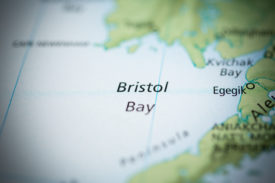 High gas prices may be grabbing headlines, but there’s another trend worth watching: the Northwest’s faltering ecosystems. Our (in)attention to ecosystem health is an example par excellence that we should measure what matters. All too often the converse is true: we let what matters be dictated by what we can measure.
High gas prices may be grabbing headlines, but there’s another trend worth watching: the Northwest’s faltering ecosystems. Our (in)attention to ecosystem health is an example par excellence that we should measure what matters. All too often the converse is true: we let what matters be dictated by what we can measure.
Biological systems are enormously complex and are inherently dynamic. So precise up-to-the-minute trend data is usually not available. And because we can’t measure and report on ecological conditions in a timely fashion that keeps pace with the demands of the 6 o’clock nightly news or the frenetic blogosphere, we often simply ignore the state of our ecosystems.
But for a change from fast news to slow news, consider today’s news reports on the state of biological systems in the Northwest.
 The Seattle Post-Intelligencerreports today that a joint study from the Center for Biological Diversity (CBD) and Friends of the San Juan Islands shows that 957 species in the Puget Sound area are at risk of extirpation. In addition to habitat loss, the principal agent of harm, the report fingers the usual suspects: "Pollution, climate change and invasions by non-native species…" (Read CBD’s press release here.)
The Seattle Post-Intelligencerreports today that a joint study from the Center for Biological Diversity (CBD) and Friends of the San Juan Islands shows that 957 species in the Puget Sound area are at risk of extirpation. In addition to habitat loss, the principal agent of harm, the report fingers the usual suspects: "Pollution, climate change and invasions by non-native species…" (Read CBD’s press release here.)
And in California, the San Francisco Chroniclereports that an attempt to expand the range of southern sea otters is now considered a failure. Members of the southern sub-species, now restricted in range to California, were unable to achieve viable population stability after being relocated to San Nicholas Island near Santa Barbara. Of the 140 otters transplanted there roughly 15 years ago, only 32 remain today.
In Oregon, the Eugene Register-Guardreports on the findings of a study by the Xerces Society for Invertebrate Conservation. Xerces demonstrates that forest insect outbreaks, an increasingly nasty problem for Northwest forests, cannot be addressed by logging or thinning the forests. In fact, cutting may actually make the problem worse. That’s germane to the awful situation for forestry in British Columbia, where the mountain pine beetle is steadily wrecking havoc on the province’s interior forests. A good piece on the economic implications for BC appeared recently in The Tyee.
None of these trends changes in a meaningful way on an hourly or daily basis. Each of them takes years to develop, the aggregate of many days of slow trends compounding, but their effects are far reaching. Will Puget Sound’s biodiversity continue to diminish? Are the southern sea otters long for this world? Will the Northwest’s forests—and forest economies—fall victim to a plague of insects?
The answers to these questions matter, but they are not easily quantifiable and they do not fluctuate often enough to warrant regular reporting. So we tend to lose sight of their significance and even the direction of the trends.
It’s not that gas prices and economic trends don’t matter—they certainly do—it’s that our society’s obsession with new data is blurring our vision. We see only the daily headlines, not the long term slow trends that may have a greater effect on the future for our children, our place, and even ourselves.







